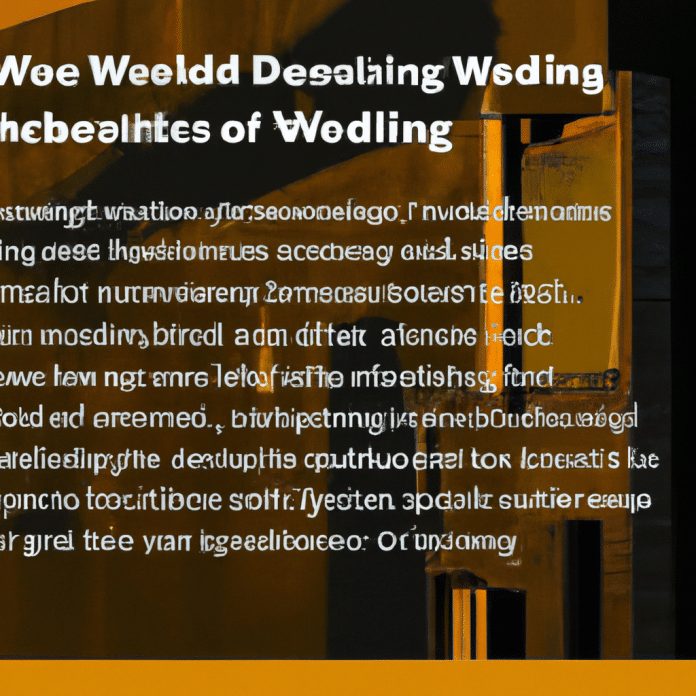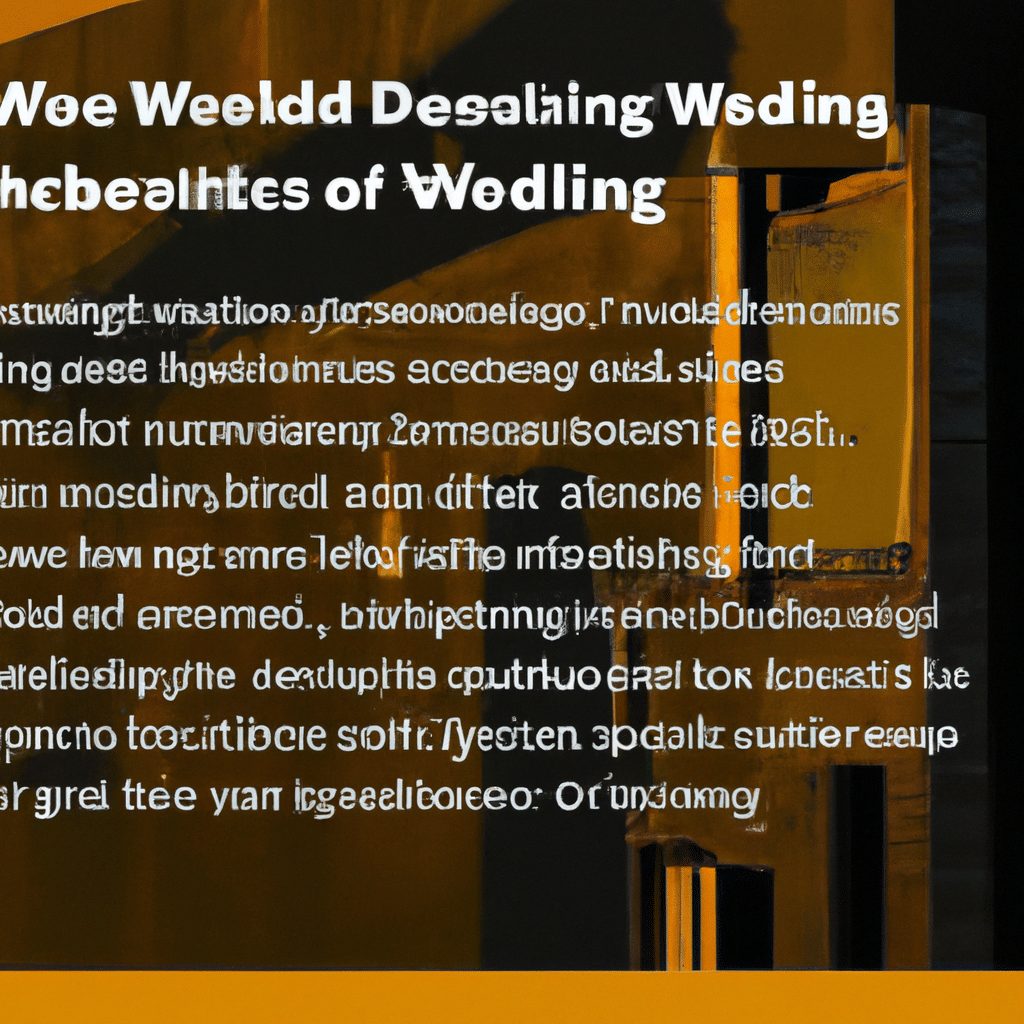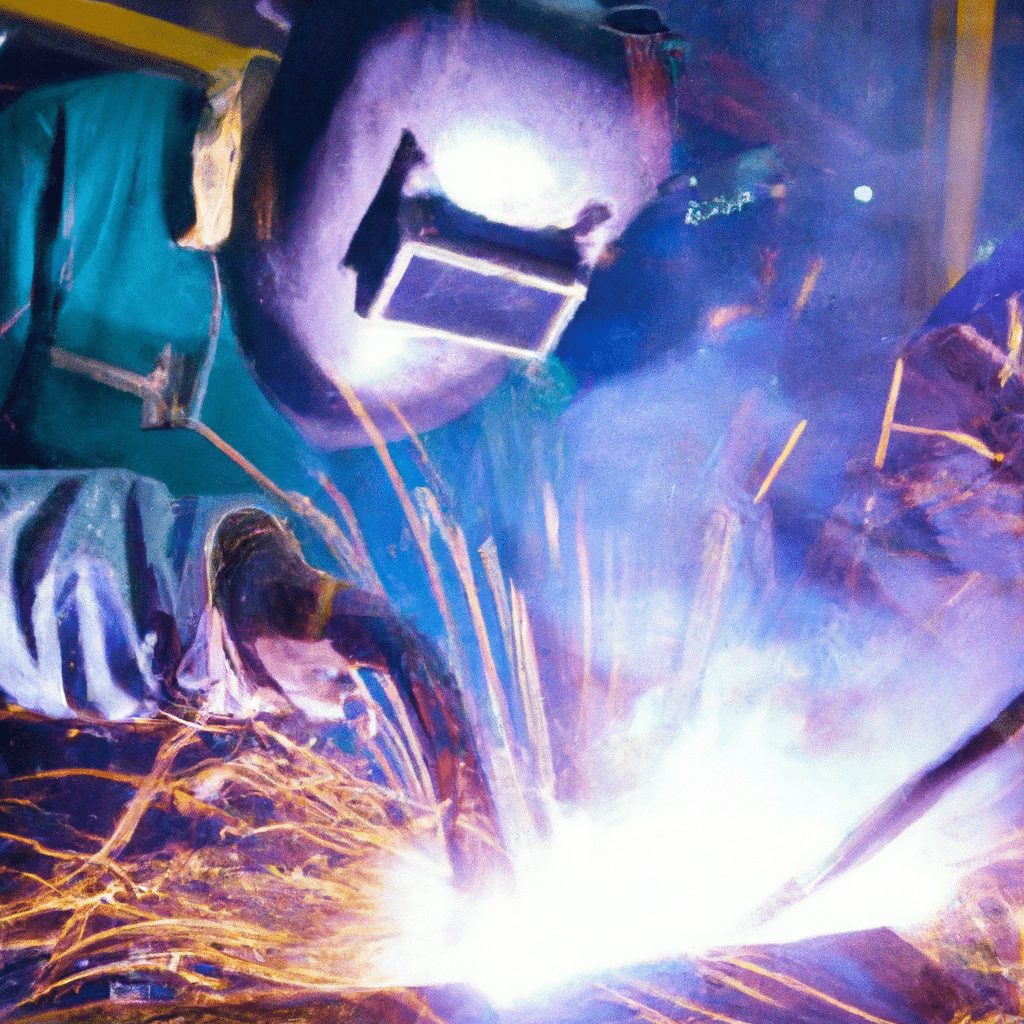When it comes to welding, choosing the right position is crucial for a successful project. Whether you’re a novice or an experienced welder, understanding how to select the correct welding position can make all the difference in the quality of your work. From horizontal to vertical, and even overhead, each position presents its own set of challenges and considerations. In this article, we’ll explore the various factors to consider when choosing a welding position and provide practical tips to help you achieve the best results. So, let’s dive in and discover the key to finding the perfect welding position for your next project.
Review contents
Factors to Consider
When choosing the right welding position for a project, there are several factors that should be taken into consideration to ensure successful and efficient welding. These factors include the workpiece shape, joint configuration, weld length, access and visibility, ergonomics, operator skill level, welding process, material thickness, welding position standards, and desired aesthetic.
Workpiece Shape
The shape of the workpiece plays a significant role in determining the appropriate welding position. Different shapes require different welding techniques and positions to achieve proper penetration and fusion. For example, flat workpieces are typically welded in the flat position (1F), while pipes may require welding in various positions such as horizontal (2G), vertical (3G), or overhead (4G).
Joint Configuration
The joint configuration refers to the way two or more workpieces are combined to form a weld. Depending on the joint type, different welding positions may be required to ensure optimal weld quality. Some common joint configurations include butt joints, lap joints, and T-joints. Each configuration may demand specific welding positions to achieve the desired strength and integrity of the weld.
Weld Length
The length of the weld is another important factor to consider when selecting the welding position. Longer welds may require the welder to switch between different positions to ensure proper heat distribution and avoid excessive distortion. By assessing the weld length, the best welding position can be determined to optimize the weld quality and efficiency.
Access and Visibility
Access and visibility play a crucial role in determining the welding position. Welders need sufficient access to the welding area to perform the necessary movements and manipulations. Moreover, clear visibility of the joint and welding arc is essential for accurate weld placement and control. Factors such as obstacles, obstructions, or limited space can impact the choice of welding position.
Ergonomics
Considering the ergonomics of the welding process is important for operator comfort and safety. The welding position should be selected in a way that reduces strain and fatigue on the welder’s body, minimizing the risk of repetitive stress injuries. Ergonomics also influence the welder’s ability to maintain proper stability and control during the welding process.
Operator Skill Level
The skill level of the operator is an important factor when determining the appropriate welding position. Some positions, such as overhead welding, require more advanced skills and experience to achieve satisfactory results. Assessing the operator’s skill level ensures that the chosen welding position is suitable for their capabilities, minimizing the risk of subpar weld quality or safety hazards.
Welding Process
Different welding processes have different requirements when it comes to the welding position. For example, gas metal arc welding (GMAW) can be better suited for flat or horizontal positions, while shielded metal arc welding (SMAW) may be suitable for a wider range of positions. Understanding the capabilities and limitations of the chosen welding process helps in selecting the right position for the project.
Material Thickness
The thickness of the material being welded also affects the selection of the welding position. Thicker materials may require the use of specific positions to ensure deep penetration and sufficient fusion. By matching the welding position to the material thickness, weld quality and structural integrity can be ensured.
Welding Position Standards
Certain industries and projects may have specific welding position standards that need to be followed. It is important to consult the applicable welding codes and standards to ensure compliance and meet the required quality and safety criteria.
Desired Aesthetic
In some cases, the desired aesthetic of the finished weld may influence the choice of welding position. Certain positions can result in different appearances and bead profiles. For example, welding in the horizontal/vertical position (5F) may create a distinct look compared to the flat position (1F). Considering the desired aesthetic ensures that the chosen welding position aligns with the project requirements.
Common Welding Positions
Now that we have discussed the factors to consider when choosing the right welding position, let’s explore some of the common welding positions commonly encountered in welding projects.
Flat Position (1F)
The flat position (1F) is one of the most common welding positions. In this position, the weld is performed on a horizontal plane, with the workpiece lying flat. This position is relatively easy and provides good access and visibility.
Horizontal Position (2F)
The horizontal position (2F) involves welding on a horizontal surface, with the weld axis positioned vertically. This position is commonly used for joints that cannot be rotated or where the weld cannot be performed in the flat position.
Vertical Position (3F)
The vertical position (3F) requires welding in an upright position, with the weld axis positioned horizontally. This position is commonly used for vertical joints and can present challenges due to gravity and potential weld pool instability.
Overhead Position (4F)
The overhead position (4F) involves welding with the workpiece positioned above the welder’s head. This position is considered one of the most challenging due to the increased difficulty in controlling the weld pool and potential issues with weld splatter.
Horizontal/Vertical Position (5F)
The horizontal/vertical position (5F) combines both the horizontal and vertical positions. It involves welding on a joint that transitions from horizontal to vertical. This position is commonly used for joints where the weld can be performed in multiple orientations.
Vertical/Horizontal Position (6F)
The vertical/horizontal position (6F) is the opposite of the horizontal/vertical position. It involves welding on a joint that transitions from vertical to horizontal. This position is commonly used for joints that require welding in multiple orientations.
Pipe Position (2G, 5G, 6G)
When it comes to welding pipes, different positions are used to accommodate the pipe’s round shape. The 2G position involves welding in the horizontal plane with the pipe in a fixed position. The 5G position requires welding on a pipe in a horizontal position, while the pipe is rotated. The 6G position involves welding on a pipe in a fixed position, with the weld axis positioned at an angle.
Joints with Fillet Welds
Fillet welds are commonly used for joining perpendicular or angled members. The welding position for fillet welds depends on the orientation of the joint and the accessibility to the weld. Common positions include flat (1F), horizontal (2F), vertical (3F), and various combinations of these positions.
Determining the Best Welding Position
Now that we have a good understanding of the factors to consider and the common welding positions, let’s explore the steps involved in determining the best welding position for a project.
Consult Welding Codes and Standards
Before deciding on a welding position, it is essential to consult the relevant welding codes and standards. These codes provide guidelines on the acceptable positions for different joint configurations and material specifications. By adhering to these standards, weld quality, safety, and regulatory compliance can be achieved.
Assess the Workpiece and Joint
Carefully assess the workpiece and joint to understand their shape, configuration, thickness, and access points. Consider how the joint will be welded and determine if any specific positions are required to ensure proper fusion and penetration. Understanding the unique characteristics of the workpiece and joint is crucial for selecting an appropriate welding position.
Consider Accessibility and Visibility
Evaluate the accessibility and visibility of the joint and welding area. Ensure that there is enough space for the welder to maneuver and manipulate the welding equipment effectively. Clear visibility of the joint and the welding arc is necessary for precise weld placement and control. If there are any obstacles or limited access points, these should be taken into account when considering the welding position.
Evaluate Operator Comfort and Safety
Operator comfort and safety should always be a priority when selecting a welding position. Consider the ergonomics of the position and its potential impact on the welder’s body. Choose a position that minimizes strain, fatigue, and the risk of repetitive stress injuries. Additionally, ensure that the chosen position does not compromise the welder’s safety and stability during the welding process.
Choose Appropriate Welding Process
Different welding processes have specific requirements in terms of the welding position. Consider the capabilities and limitations of the chosen welding process. Some processes may be better suited for certain positions, while others may be more versatile. Select a welding process that aligns with the project requirements and can be effectively executed in the chosen welding position.
Adapt to Material Thickness
The thickness of the material being welded can impact the selection of the welding position. Thicker materials may require positions that allow for deeper penetration and better fusion. Evaluate the material thickness and match it with a welding position that ensures the desired weld quality and structural integrity.
Consider Aesthetics and Finished Appearance
In some cases, the desired aesthetic of the finished weld may influence the choice of welding position. Different positions can create different appearances and bead profiles. Consider the look that is desired for the project and choose a welding position that can achieve that aesthetic. However, aesthetics should not compromise the strength and quality of the weld.
Trial and Error
Sometimes, determining the best welding position may require some trial and error. It is important to conduct test runs and evaluate the results before committing to a specific position. Adjustments and refinements may be necessary to achieve the desired weld quality and efficiency. Take the time to experiment and refine the welding position until the optimal solution is found.
In conclusion, choosing the right welding position for a project involves considering several factors such as the workpiece shape, joint configuration, weld length, access and visibility, ergonomics, operator skill level, welding process, material thickness, welding position standards, and desired aesthetic. By carefully assessing these factors and following the steps outlined, welders can ensure successful and efficient welding, resulting in high-quality welds that meet the project requirements.





























